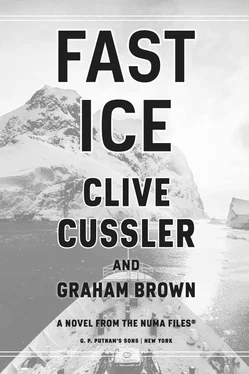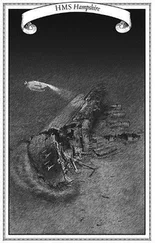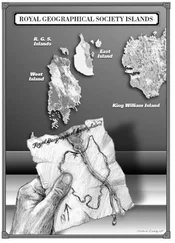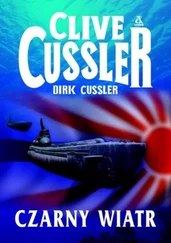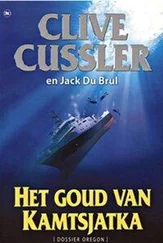58
The radar scan proved disappointing, showing no sign of a ship in the bay. Just ice, snow and water. Even when Hiram ran the data through a program that sharpened the details, there was nothing to see.
“What are we overlooking?” Rudi asked.
Hiram rubbed the stubble on his chin. “If a ship were hidden under a massive shelter, like the German submarine pens at Saint-Nazaire and Lorient, we wouldn’t pick it up.”
That seemed unlikely to Rudi. “The largest U-boat pens were a few hundred feet in length. Ryland would have to construct a shelter ten times larger. It would have to be wider and higher. And he’d have to carve it out of unstable ice at the crumbling end of a glacier. Perhaps they’ve installed a man-made covering along the shoreline,” he mused. “White fabric coated with snow.”
Hiram shook his head. “I’m not sure fabric could stand up to the punishing winds and weather there.”
Garland chimed in. “The radar beam would pass through the fabric and light up the ship. We’d see it on the return like the image on an X-ray. Like a gun hidden in a suitcase.”
Rudi acquiesced. “This is like searching for Harvey, the rabbit.”
Hiram thought a moment. “Maybe not Harvey, but Habakkuk.”
“Habakkuk the rabbit?” Rudi asked.
“Habakkuk the prophet,” Hiram replied, retrieving a report from a folder in front of him. “Behold ye among the heathen, and regard, and wonder marvelously,” he quoted, “for I will work a work in your days, which ye will not believe, though it be told to you. Habakkuk, Chapter 1, Verse 5.”
“Is that from the Old Testament?” Garland asked.
“It is,” Hiram said. “Written by a Jewish prophet in the seventh century B.C. He was speaking to his people about God’s coming wrath. He was about to remake their world. And was going to do it violently.”
“Sounds like something our apocalyptic friend Ryland would agree with,” Rudi said. “Why do you bring it up?”
“Because Kurt saw the name on the model in Ryland’s office. He put them in his report, but he was more focused on the George Bernard Shaw quote about the value of the ‘unreasonable man.’ I pulled some research on both. Like everything else we’ve learned about Ryland, what’s presented up front is one thing, what’s hidden is something else.”
Rudi wrinkled his brow. “I fail to see how a religious quotation from twenty-seven hundred years ago will help us now.”
“Because it’s not just a scriptural quotation,” Hiram said. “It’s also the code name of a secret plan the Allies considered during World War Two. The Nazis had their secret plans involving ice and we had ours. In this case, Project Habakkuk.”
“Go on,” Rudi said.
“The idea was simple. During the early part of the war, German U-boats were hitting Allied convoys in the middle of the Atlantic with impunity. They remained stubbornly out of the Allies’ reach as even the longest-range aircraft, operating from the east coast of the U.S., the southern tip of Greenland and the west of England were unable to close that gap. A sprawling area a thousand miles across remained unpatrolled. And that’s where the wolf packs did their hunting.
“To close that gap, a man named Geoffrey Pyke came up with an idea. He wanted to build a massive aircraft carrier and place it in the center of the ocean. His initial proposal suggested it be nearly three thousand feet in length, others proposed an even bigger structure the size of a land-based airfield. This aircraft carrier/base would allow anti-submarine planes to cover every inch of the Atlantic, putting an end to the wolf pack’s ability to hunt freely.”
“Sounds far-fetched,” Garland said.
“It was. Because such a ship would use as much steel as an entire fleet and the high command was not interested in diverting that much material for what they considered a long shot. But then Pyke suggested the massive ship could be built out of ice. He and his team even came up with a formulation of frozen water mixed with sawdust and wood pulp that proved much stronger than regular ice and more resistant to melting. He called it Pykrete and insisted it could be manufactured on blocks and then shaped and stacked as easily as bricks and mortar.”
Rudi was silent. He’d heard of Pykrete and the Habakkuk idea long ago. “You think Ryland built a ship out of ice?”
Hiram shrugged. “It’s the only explanation that fits all the facts. He needs a ship, it must be massive, as Joe told us, and it must be invisible to a radar scan looking for steel.”
Rudi considered the idea. “Ryland and his friends do seem to be experts in the manipulation of frozen water. But as I recall, tests of the Pykrete idea for use in shipping failed miserably.”
“I can’t say how they did it. Kurt’s description of the submarine that hit them is a possible clue,” Hiram replied. “He said the hull appeared almost translucent when the light hit it at a certain angle. More importantly, there’s Joe’s report of dirty ice all over the deck of the Grishka . It was piled up on the side where the ship had obviously been in a collision. Joe described this ice as gray-yellow in color and containing a mesh-like network of fibrous material and a residue of dry powder. That’s about what Pykrete would look like if you used fiberglass instead of wood pulp.”
Rudi tried to recall the details of Joe’s report. “It certainly does sound like Pykrete. Or a new and improved version.”
“The Antarctic would be the place to build a ship out of ice,” Hiram said. “Aside from the fibers or resin you’d have to bring in, all your raw materials are right there at hand. It would be like building a giant igloo.”
Garland added to the consensus. “A ship of ice would explain why we’re not getting a radar return. And by that I mean we’re getting one, it’s just indistinguishable from the surroundings.”
“All right, let’s run with this,” Rudi said. “Compare the radar image with the visual and infrared images from twenty-four hours ago. And any older images you can find. Anything in the new image that wasn’t in the old one—that’s our ship of ice. And once we find it, we can sink it.”
“That might prove easier said than done,” Hiram said. “The whole point of the Habakkuk project was to build a ship that was indestructible. In such a vessel, thick ice is necessary for strength and stability, but it also results in a hull that is impervious to bombs, mines and missiles. Even the original design for the Habakkuk was intended to be invulnerable to German torpedoes of the day—and those carried six-hundred-pound warheads designed to break the spine of a battleship. If Ryland has built his own Habakkuk , we could pound it for hours with everything in our arsenal and do nothing but deafen the people inside.”
Rudi knew enough about engineering and ship construction to know that everything was a trade-off. Even a ship of great size and strength would have a weakness somewhere. “First things first,” he said. “Let’s find that ship and make sure we’re not guessing ourselves right out of the ballpark.”
59
BASE ZERO
Gamay sat at the table Yvonne had once occupied. She stared at the same computer, monitoring the same flow of water through the tunnel bored in the ice.
She turned to Paul, who remained on the bedroll with his injured leg elevated. “The water in the tunnel has gone past the final sensor. If this is accurate, it’s already pouring into the sea.”
Paul had the satellite phone with him. He’d been trying to reach Rudi through the storm but to no avail. “Either Kurt and Joe didn’t get there or they’ve made it and haven’t been able to do anything about it. Odds are that station is going to be as well defended as this one.”
Читать дальше
